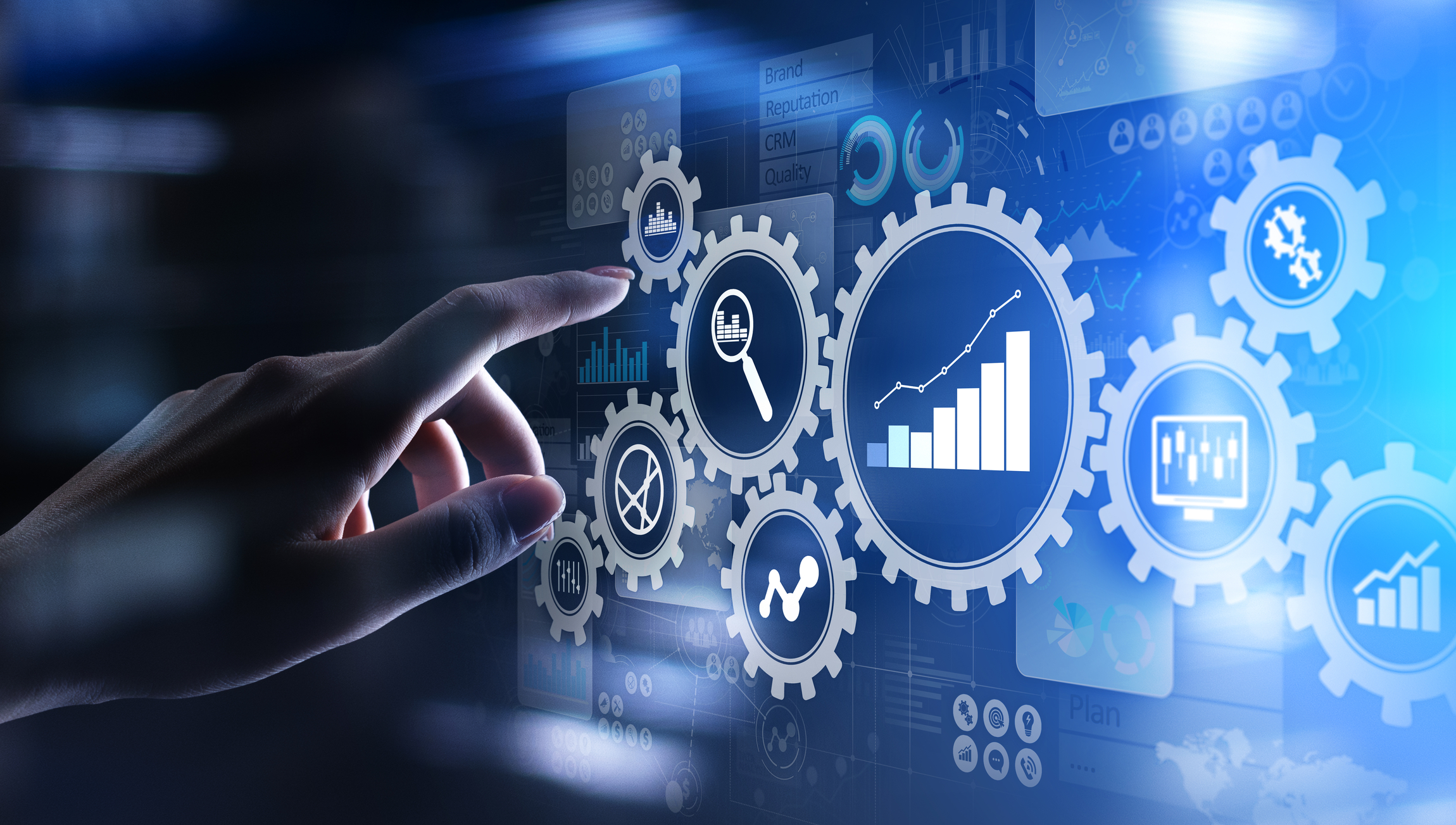What happens when Artificial Intelligence (AI) and the Internet of Things (IoT) combine? If all goes according to plan, the answer is unprecedented access to and management of data on a scale never seen before. The result is digital transformation.
The future of big data and market research can benefit greatly from AI and IoT. Machine learning is poised to emerge as the most critical method of gathering data insights as IoT grows bigger with every passing year. But that isn’t the only change in sight.
By moving AI functionality to edge computing devices on IoT networks, electronics manufacturers can put intelligent solutions into the homes of consumers worldwide. AI and edge computing together reduce latency, enable offline usability, boost performance, and cut down on the need for bandwidth or high-speed data plans.
By themselves, AI and IoT have revolutionized the technology field, especially for businesses in fast-evolving industries. The market appears primed for a digital transformation. Based on expert insights, we can expect global industries to operate very differently in ten years than they do today. The following are highlights and trends to keep tabs on as the technological revolution accelerates.
One thing is clear: the potential is massive.
By the end of the decade, the perfect marriage of AI and IoT could be used to harvest, interpret, and use data from as many as 75 billion IoT endpoints, according to some expert predictions. More conservative estimates put the number of active IoT devices closer to 25.4 billion by 2030, but that’s still an incredible number. The sheer number of predicted data-producing endpoints alone points to the shocking expansion of IoT networks we will see in the near future.
The forecast makes sense. As of 2021, there are over 10 billion connected IoT devices, and that figure is growing rapidly. On average in 2019, 127 new devices connected to the internet for the first time every second. By 2025, the number of connections per second could reach 2,536.
Given the incredible expansion we have seen in recent years, a prediction of 75 billion connected IoT devices by the year 2030 may actually be a conservative estimate. This looks even more likely as the COVID-19 pandemic encourages continued remote work and smart device upgrades for millions of people spending more time in their homes.
Regardless of the exact number of IoT devices in use, the trends all agree that the potential for IoT expansion is overwhelming. This brings us to the next critical component of data analysis in the future: artificial intelligence.
Why is the synergy between AI and IoT so critical?
The answer to this question is startlingly simple. Humans simply can’t keep up with the volume of data harvested by so many devices.
If you were to count starting from one, taking no breaks and assuming it takes you three seconds to count each number, you would need 7,132.5 years to reach 75 billion. Considering the number itself is nearly beyond our capacity to visualize, it’s no wonder humans fall short when each of these 75 billion devices harvests and transmits up to hundreds or thousands of data points every day.
By 2025, data analysts may be facing 150 zettabytes (that’s 150 trillion gigabytes) of data collected from sources all over the world. As the IoT network grows, that number will only increase.
How could human analysts possibly harvest, organize, normalize, analyze, and then make sense of so much information? And those are just the beginning stages of the process. No business executive wants to receive presentations full of incomprehensible lists of data. Trends, projections, and relevant anomalies need to be compiled into useful reports that drive business insights and decision-making, or they serve no purpose at all.
In the past, companies dealing in “big data”—that is, data sets that are so large and complex that they exceed the capability of traditional databases and thus require special software to manage—knew what they were signing up for when they purchased their equipment and set up their networks. Today, this isn’t always the case.
The sheer number of connected devices and the ever-expanding list of industries setting up their own IoT networks means that more businesses than ever before are unwittingly entering into the realm of big data. Many of these businesses, in their pursuit to connect everything and harvest all of the relevant data, may not even realize they are running into a problem until they are faced with a server full of raw data and no way to use it.
This is where AI fits into the equation.
Intelligent algorithms can be trained to identify patterns, anomalies, trends, and more that would be difficult to uncover with less-advanced technology. The existence of “big data” as an industry necessitates some type of intelligence to manage it and make sense of it. Businesses that delve heavily into IoT can expect to need an AI data management platform sooner rather than later.
Without the help of AI and machine learning, the field of big data analysis would face an insurmountable obstacle.
What will AI and IoT be used for, out of the gate?
Some of the primary areas currently being aided by AI and IoT are the analysis of key trends, how those trends could impact the future market of their corresponding industries, and the decisions behind hardware and software development.
Analysts who specialize in a given industry–hardware component research and development or IoT software platforms, as examples–can use the trends, anomalies, and forecasts provided by AI to develop their market intelligence reports for major companies or research groups.
However, the full potential of AI and IoT goes far beyond market intelligence.
As businesses begin to implement far-reaching IoT networks, they not only have to figure out how to use all this data, but also how to secure it. Everything from proprietary information to the personal details of employees gets transmitted from device to device within a network. Businesses just entering into IoT are often ill-equipped to deal with the security issues arising from the rapid expansion.
A “trained” AI function on that IoT network could be used to spot holes in network security and bring them to the attention of IT specialists. Or, if applicable, the AI could automatically download and execute security patches without human employees having to finish the task.
Consumers will notice changes on their end, too.
For example, think of a connected car as an IoT device. Without an AI program, it is essentially an IP address endpoint controlled entirely by the user. With AI, functions such as lane correction and braking assistance can happen without input from the user.
Additionally, most people have become accustomed to the automated healthcare systems that have grown in popularity since the beginning of the COVID pandemic. AI can help patients find the right type of doctor, apply insurance coverage, or any number of other useful applications that improve the healthcare experience.
Where will consumers notice changes first?
The combination of AI and IoT will eventually be pervasive throughout all industries. Those involved with cutting-edge research and data solutions will see the effects rapidly, but the average consumer will first notice differences in the automotive, industrial, and medical industries.
Users can also expect to see more AI-enhanced features in consumer products, such as in the automobile example above. The proliferation of AI assistants for smartphones demonstrates users’ desire for better productivity, ease of use, and seamless integration of smart devices into everyday life. Manufacturers of these smart devices are happy to oblige; after all, more advanced AI leads to happier customers and more accurate data collection from those same customers. It’s a self-propelling cycle.
Can the data be trusted if there is no human oversight?
AI, according to the Oxford Dictionary, is “the theory and development of computer systems able to perform tasks that normally require human intelligence, such as visual perception, speech recognition, decision-making, and translation between languages.”
However, what we’re talking about in reference to AI and IoT is a program capable of exceeding human intelligence and abilities within its narrow field of data interpretation.
Essentially, what IoT needs is an AI platform capable of reading billions of data points, translating those data into normalized versions that can be compared “apples to apples” against themselves, and then extracting only the most relevant points so humans can take action based on a hierarchy of priority.
Some consumers have expressed concern to hear that AI-driven insights will soon be used in such critical fields as healthcare and automotive development before we, as a population, become used to the presence of AI in everyday life. Can such a solution be trusted, especially in its early stages?
AI uses data sets to learn and become more intelligent. Out of the box, an AI platform could have the most advanced algorithms ever developed. However, if that algorithm is fed subpar data, it will not learn and become more accurate or more efficient over time. So the real potential—and minimization of risk—comes from accurate data combined with intelligent and safe resulting actions.
Eventually, and especially under human guidance, AI platforms can learn to identify trends, pinpoint problems, notice unexpected changes, and condense these findings into reports that humans find helpful. The goal is a “best of both worlds” scenario where AI aids the process but humans still make the critical decisions.
If your company is looking for AI and IoT solutions, we have innovative strategies that can help you.

